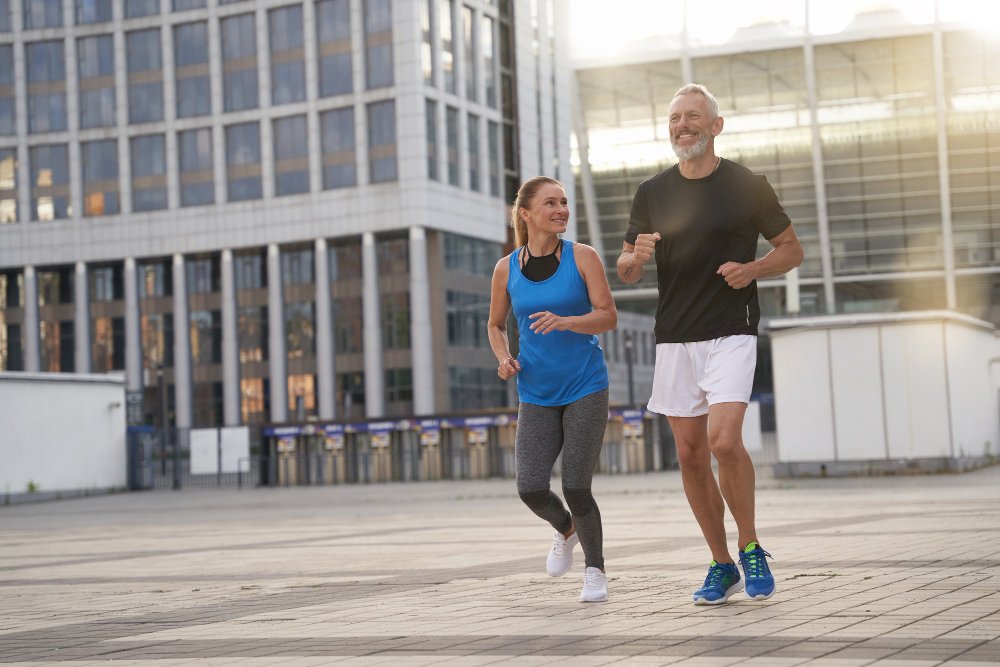How can Fitness Professionals learn to train older adults?

“Age is just a number”- This adage is widely used, especially in the field of fitness. In the fitness world, your performance can overshadow your age. Now, even fitness professionals are learning the required set of skills to train older adults.
But, the capability of the elderly isn’t the only reason behind the inclination of the fitness industry towards them. According to the UN, 705 million people are of age 60 or above, and the number will be doubled by 2050. Numbers are telling you about the infinite possibilities for the health and fitness market in the coming years.
So, if you’re from the fitness industry, it’ll be best if you can learn to train the older citizens. But if you’re clueless about it or have no experience of training older people, don’t worry, we’ll help you out. In this article, we’ll discuss the dos and don’ts you should know before training older clients.
What Should You Add to Your Fitness Regime?
Establish a Communication
According to a study, 28% of people aged 50 or above were found to be inactive. The inactivity results in atrophied muscles and tentative joints. As a fitness trainer, you can’t ask the older clients to unrack the weight as your job is to fix the existing issues and not produce new ones.
Therefore, start with establishing positive communication with the client. You should know everything about their health history. All the major mishaps occur when the trainer is unaware of the client’s past injuries and health condition.
Examine their health and make sure they don’t have even the slightest niggle.
Scaling
In Scaling, a workout plan is customized for a specific individual. The scaling process is mandatory to prevent injuries and to train older people safely. After the age of 50, the endurance becomes limited, and they are less mobile.
On the contrary, not every older adult will have a poor fitness level. Thus, you can’t generalize a scaling plan as every individual comes with a unique fitness level. To be on the safer side, perform a fitness and health exam before the training session.
Begin with basic form exercises for cardiovascular health, stamina, and flexibility. We’ll discuss these exercises in the coming section.
Don’t Assume
As we mentioned above, every individual is unique. Thus, you can’t associate “age” with “delicate” and scale a workout program. If the workout isn’t challenging enough, the client will experience minimal results.
If the client is an experienced fitness enthusiast, don’t refrain from creating a vigorous regime for them. A high-intensity workout can be impactful in increasing endurance and stamina. Studies have shown signs of longevity in people performing a vigorous workout.
However, It’s crucial to be realistic while preparing a vigorous plan. Try exercises that are useful for balancing as older people can’t balance themselves. Gentle stretching is also recommended to avoid muscle stiffness and soreness.
Old-School Strength and Hypertrophy Work
People are more concerned about sarcopenia (muscle loss) and osteopenia (bone loss). But no one ever talks about dynapenia (strength loss). In comparison to muscle, the loss of strength is rapid and significant.
The loss of muscle is also considerable in inactive older citizens. Thus, if the client is 55 or above, an old-school fitness regime can be a game-changer. The focus is more on hypertrophy and strength. The sweet spot of the rep range for the elderly is somewhere near twelve. The TRX rows are one such exercise that can improve strength and muscle mass.
Types of Workouts
You can follow three types of workout that are given below:
Strength Training
Resistance training is crucial for muscle mass and strength. If your client is inactive, start with basic movements and use gym machinery. Resistance bands can also be used as it’s least likely to injure your client. Avoid the use of barbells with a heavyweight.
Cardio Training
The heart is one of the weakest parts of older people. Strengthening the heart can have a positive impact on the life span. Safe and low-intensity cardio can do wonders for you. Older adults can have balancing issues; hence it’s better to keep them away from a treadmill. A stationary bike is the best possible alternative as it can support seniors.
Mobile Training
Poor mobility and flexibility can result in bad form and restricts the range of motion. An exercise done with poor technique can be hazardous for older aged people. It’s better to enhance flexibility by introducing a simple stretching routine.
Conclusion
Training an older individual can have several challenges, but an appropriate plan will save you from any mishap. Don’t rush the process, and be open to communication. Discuss the goals with your clients and understand their requirements.
We hope this article was helpful for you, and now you’re ready to train older individuals.


